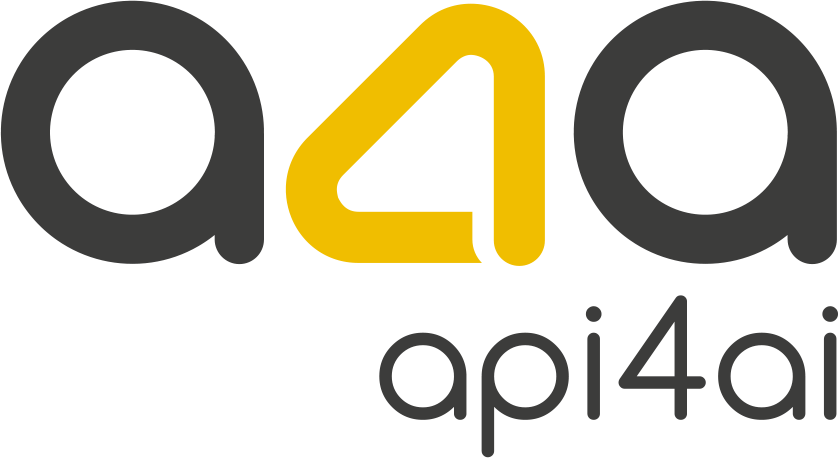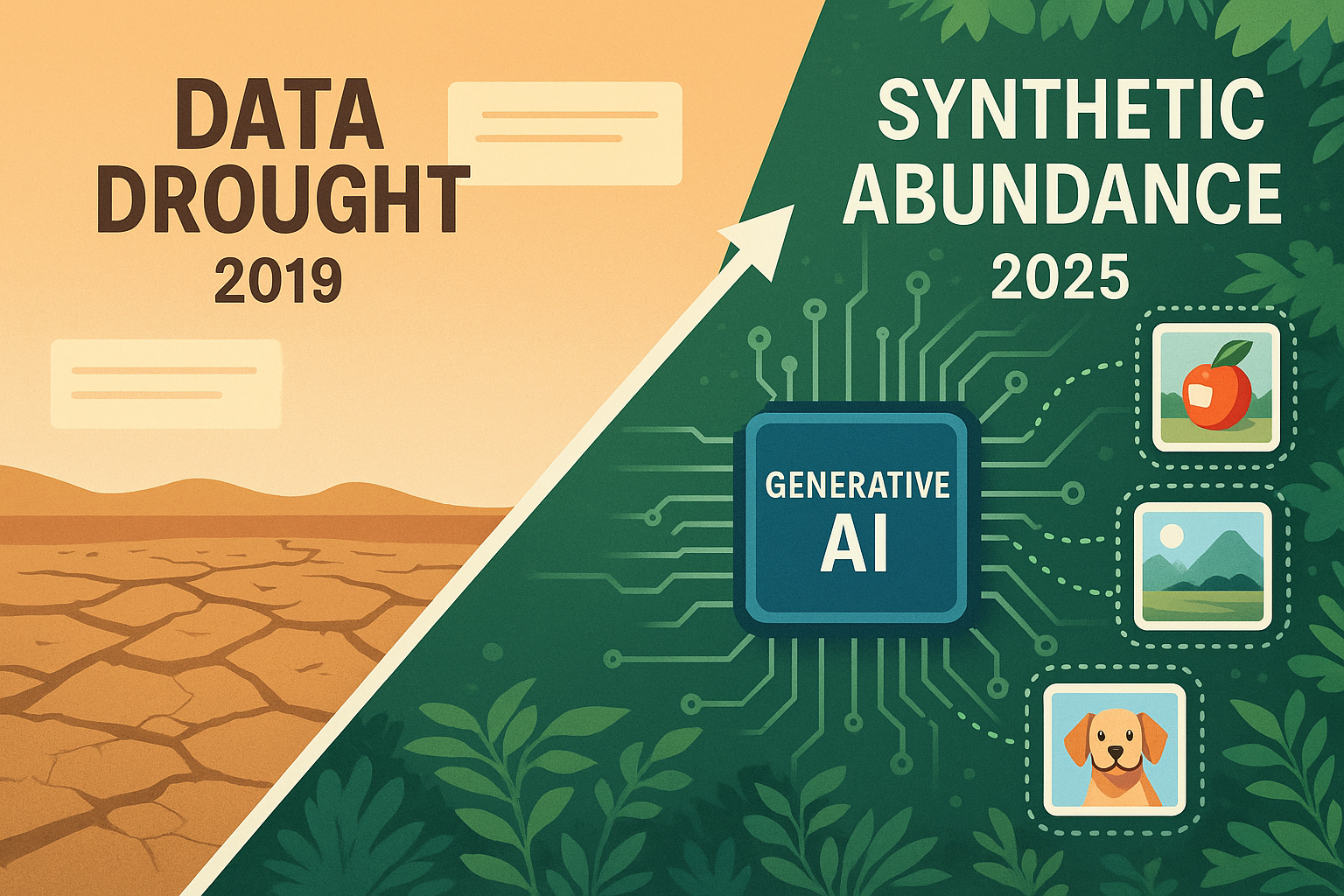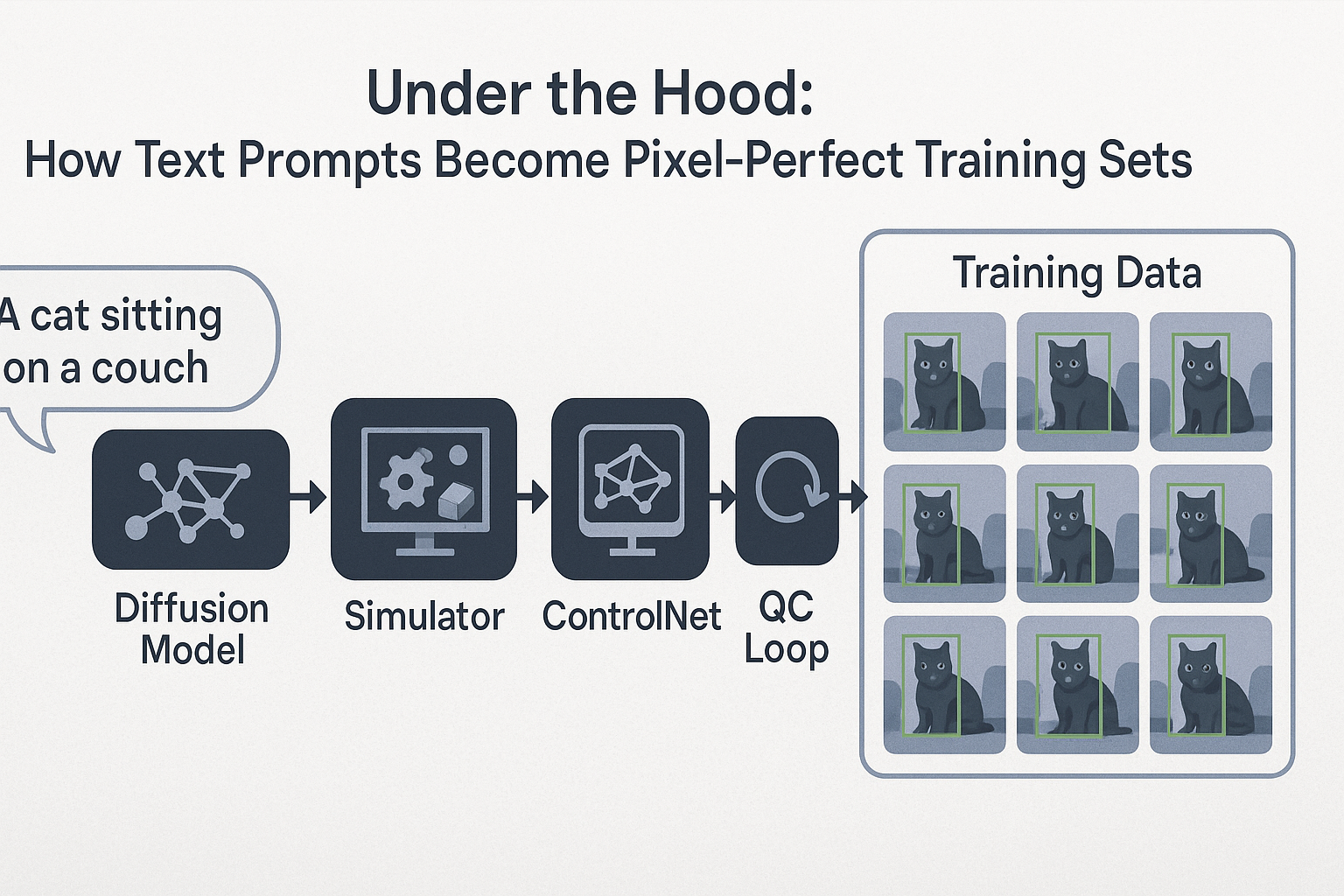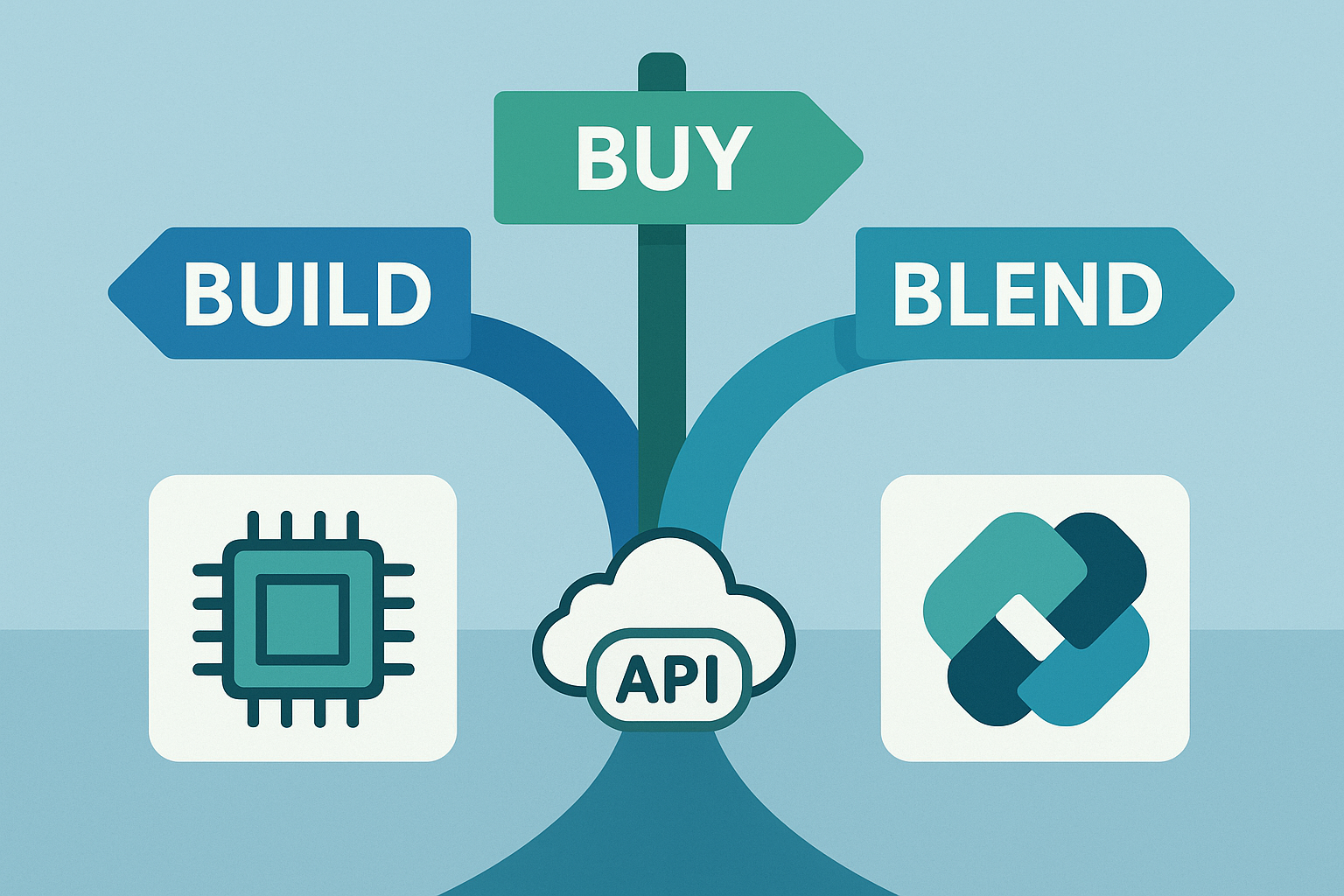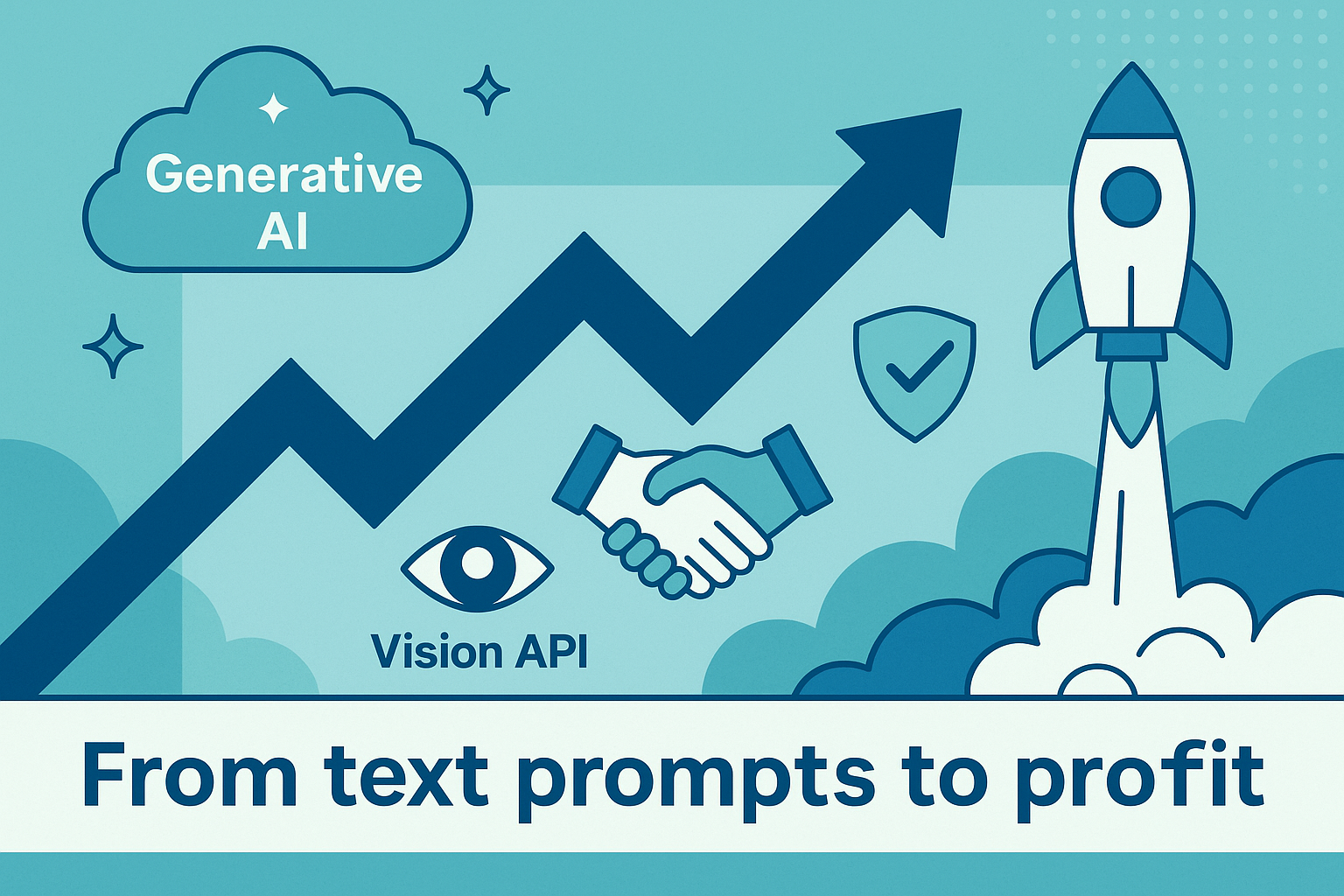Generative AI Meets Vision: From Text Prompts to Training Data
Introduction
Computer vision is no longer gated by algorithms — it’s gated by data. Autonomous factories, smart retail shelves, and fraud-proof KYC pipelines all depend on millions of precisely labeled images, yet the traditional approach of photographing and hand-annotating every scenario is too slow, too costly, and increasingly tangled in privacy regulation. Generative AI (GenAI) changes this equation by turning concise text prompts into domain-specific, perfectly labeled pictures on demand.
The money is already moving. Analysts peg the global synthetic-data generation market at US $ 584 million in 2025 and accelerating at a 35 % CAGR through 2034 — an order-of-magnitude rise that mirrors early cloud-computing growth curves (Precedence Research). Gartner adds that synthetic data will surpass real-world data inside AI models by 2030, making it a board-level priority rather than a research experiment (Gartner).
Why executives care: the unit economics of labeling are broken. Even after years of outsourcing and automation, image annotation still runs US $ 0.01 – 5.00 per frame, and complex segmentation for regulated industries sits at the top of that range. Multiply those figures by the tens of millions of examples needed for modern vision stacks and the budget balloon is obvious (BasicAI).
Leadership momentum is already here. A 2025 McKinsey survey finds 99 % of C-suite leaders are familiar with GenAI tools, and more than half plan to increase investment over the next three years — yet only 1 % feel their organizations are truly “AI-mature” (McKinsey & Company). Bridging that maturity gap hinges on faster, cheaper, fully compliant training data — exactly what text-to-image generators supply.
From strategy to execution, ready-to-use vision APIs collapse the time-to-value curve. Cloud endpoints for OCR, Background Removal, Logo Recognition, NSFW filtering, and dozens of other tasks (for example, those offered by providers like API4AI) can jump-start pilots while synthetic data scales coverage of edge cases and rare defects. Together they form a “data flywheel” that continually sharpens models without the traditional annotation grind.
Read on to see how forward-looking leaders are pairing generative data with commercial vision APIs to slash costs, de-risk privacy, and out-innovate their markets — moving from text prompts to production-grade training datasets in weeks, not quarters.
The 2025 Landscape: From Data Drought to Synthetic Abundance
Board-level money shift. In just two years the synthetic-data market leapt from a niche USD 218 million (2023) to a forecast USD 1.8 billion by 2030 (35 % CAGR) (Grand View Research), with long-range analysts now projecting USD 13 billion by 2034 (45.9 % CAGR) (Future Market Insights).
Adoption has crossed the 50 % “mainstream” mark. Industry telemetry shows 76 % of new computer-vision projects in 2025 start with synthetic data in the pilot phase, reflecting how quickly GenAI tooling has moved from R&D into day-one architecture decisions (UnitX).
Strategic inevitability, per Gartner. Analysts now predict that synthetic data will surpass real-world data inside most AI models by 2030, turning today’s tactical experiments into tomorrow’s default practice for privacy-preserving, bias-controlled training (SAP).
Technology tipping points unlock scale. Diffusion and generative 3-D pipelines already reach “indistinguishable from real” visual fidelity, but the cost curve is the real breakthrough: Nvidia’s forthcoming Rubin GPUs promise up to 900× performance over Hopper and a 99.97 % cost reduction per generated image, pushing marginal creation cost toward zero (SemiAnalysis).
Business impact: speed, savings, safety. When synthetic pixels flow directly into proven cloud APIs — think Background Removal, Logo Recognition, OCR, or custom models delivered by partners such as API4AI — enterprises can launch vision pilots in weeks, slash labeling budgets, and sidestep GDPR/CCPA headaches, all while compounding model accuracy through an on-demand “data flywheel”.
Key takeaway for the C-suite: the constraint on computer-vision ROI is no longer data scarcity or annotation cost; it’s how fast leadership can integrate synthetic-data pipelines and commercial vision APIs into the product roadmap before competitors do.
Under the Hood: How Text Prompts Become Pixel-Perfect Training Sets
1. Diffusion engines — noise in, realism out.
State-of-the-art diffusion models start with pure noise and iteratively “denoise” toward an image that matches your text prompt, creating photographs and diagrams that are often indistinguishable from real-world shots. Because the reverse-diffusion process is learned from billions of public images, it reproduces lighting, textures, and perspective with near-photographic fidelity — yet never re-uses any private customer data (SuperAnnotateTechRadar).
2. Precision controls for enterprise needs.
Open-source add-ons such as ControlNet let teams lock a production-grade diffusion backbone and overlay spatial constraints — edge maps, depth cues, or segmentation masks — so every generated frame arrives with pixel-accurate labels ready for training. This transforms GenAI from a marketing curiosity into a regimented data factory for safety-critical use cases like robotics or medical QC (openaccess.thecvf.com, arXiv).
3. When photorealism isn’t enough: physics-true 3-D renders.
For tasks that depend on exact geometry — defect detection on circuit boards, warehouse robotics, autonomous driving — enterprises switch to high-fidelity simulators such as Unity Perception or NVIDIA Omniverse Replicator. These engines randomize lighting, camera angles, and object materials while outputting automatic metadata: 2-D/3-D bounding boxes, depth maps, surface normals, and unique IDs for every object in the scene (arXiv, docs.omniverse.nvidia.com).
4. Hybrid “best-of-both” pipelines.
Leading teams blend diffusion and 3-D generation: a physics simulator delivers perfectly scaled objects; a diffusion model paints realistic textures; and a lightweight style-transfer GAN aligns the composite to brand aesthetics. The result is a dataset that covers edge-case lighting or rare defects without a single photo shoot.
5. Automated quality-assurance loop.
AI-driven QC engines flag “hard negatives” from production streams — samples that the current model misclassifies — and instantly regenerate look-alike images via text prompts (“dust speck on matte black surface under raking light”). This active-learning cycle tightens accuracy release after release while containing annotation spend.
6. Plug-and-play with vision APIs.
Generated images flow straight into cloud endpoints for OCR, Background Removal, Logo Recognition, or NSFW filtering to validate that labels, bounding boxes, and privacy safeguards are correct. Using mature APIs (for example, those available from API providers such as API4AI) eliminates the need to build every preprocessing or validation step in-house, letting teams focus R&D bandwidth on their proprietary models.
Executive takeaway: Text-prompted data factories are not science projects; they are production pipelines that marry GenAI generation, automated labeling, and proven vision APIs to slash dataset costs, accelerate model roll-outs, and insulate the enterprise from privacy or IP risk.
Business Impact & ROI: Numbers the CFO Will Love
Data-labeling economics flip from cost center to rounding error.
Manual, pixel-level labeling still averages about US $ 0.84 per image. A recent Stable Diffusion benchmark generated 9.2 million, auto-labeled images for roughly US $ 1,900 — that’s ≈ US $ 0.0002 per frame, or more than 4,000 times cheaper.
To translate those ratios into real budget lines:
A pilot set of 100 k images falls from roughly US $ 84 k to under US $ 20.
One million images drop from ≈ US $ 840 k to about US $ 200.
Even a 10 million-image corpus — once a multi-million-dollar endeavor — now costs less than a single engineer’s laptop.
Speed-to-accuracy collapses from quarters to weeks.
Diffusion engines and physics-true simulators “boot” in hours; data-collection campaigns used to take months. Injecting only a few thousand synthetic examples routinely lifts model accuracy by double-digit percentages, allowing teams to hit production KPIs well before the next budget cycle closes.
Beyond CapEx savings, synthetic data unlocks fresh P&L levers.
Higher throughput: Faster dataset refreshes shrink defect-related scrap or charge-backs inside the same quarter.
Regulatory agility: Synthetic replicas skirt GDPR, HIPAA, and trade-secret constraints, accelerating entry into data-sensitive markets.
Revenue acceleration: Need seasonal SKUs or regional packaging? Generate the new bottle angles or label variants overnight and update recognition models before the campaign launches.
Ready-made vision APIs slash time-to-value even further.
Plug Background Removal, Logo Recognition, OCR, NSFW filtering, and other mature endpoints into the synthetic-data pipeline to automate preprocessing and compliance checks. Leveraging proven APIs (for example, those available from providers like API4AI) lets engineering focus on proprietary value while finance enjoys production-grade results at a fraction of historic cost and timeline.
Execution Playbooks: Build, Buy, or Blend
There are only three viable paths to a production-grade vision system in 2025. Knowing which one fits your business model — and when to pivot between them — determines whether AI becomes a cost sink or a competitive moat.
1. Full-Stack Build — Own Everything, Pay Everything
When it fits
You operate in a highly regulated, IP-sensitive domain (medical devices, national security, proprietary manufacturing processes).
The model itself is the product, and long-term margin depends on zero per-call fees.
You have, or can attract, specialized CV scientists, MLOps engineers, and data-governance staff.
What to expect
12- to 24-month runway before the first production release.
Seven-figure CAPEX for GPUs, storage, and MLOps tooling, plus recurring cloud or colocation OPEX.
Continuous liability for data provenance, model drift, and compliance audits.
Leadership question
Will owning every layer materially increase enterprise value after accounting for talent scarcity and technical debt?
2. API-First Buy — Speed Now, Flex Later
When it fits
You need to prove a business case this quarter (e-commerce try-on, smart QC station, KYC automation).
Usage is bursty or uncertain, making pay-as-you-go pricing attractive.
Differentiation comes from workflow integration or domain know-how — not from the vision algorithm itself.
What to expect
Days, not months, from PoC to pilot using plug-and-play endpoints such as Background Removal, OCR, Logo Recognition, or NSFW filtering.
Zero infrastructure management; SLAs and security certifications are inherited from the provider.
Unit economics scale linearly with call volume, so margins can compress as usage explodes.
Leadership question
Is the time-to-revenue gained now worth ceding direct control of the core model long-term?
3. Strategic Blend — The Pragmatic Majority Route
When it fits
You want start-up speed and eventual cost control.
Only part of the pipeline is truly unique (e.g., detecting micro-defects on your proprietary material), while the rest is commodity (face blurring, label OCR).
You prefer an incremental road-map that lets you in-source modules as ROI and talent permit.
Execution blueprint
Phase 0: Rapid pilot
Integrate commercial vision APIs from vendors such as API4AI for the baseline workflow.
Wrap them with business logic and dashboards to validate commercial KPIs (conversion uplift, scrap reduction, fraud-catch rate).
Phase 1: Data flywheel
Spin up a generative pipeline to create synthetic edge-case data where API accuracy plateaus.
Fine-tune an internal model on this augmented set; route only the hardest calls to it while the API still handles the bulk.
Phase 2: Gradual in-sourcing
As call volume and predictability rise, move the high-traffic modules in-house to flatten unit costs.
Keep low-frequency or ancillary tasks on the external API to avoid over-engineering.
Leadership question
Which milestones — accuracy, call volume, gross margin — should trigger moving a capability from “buy” to “build” without distracting core teams?
Governance Guard-Rails for Every Path
Talent and org design: Assign a single exec sponsor (often the CIO or Chief Product Officer) to own the end-to-end data-model-business loop.
Cost telemetry: Implement real-time cost observability — whether it’s GPU hours, API calls, or synthetic-generation expenses — so finance can spot runaway spend before quarter-close.
Compliance readiness: Demand SOC 2/ISO 27001 from API partners; mirror the same controls internally if you build.
Exit ramps: Negotiate data-portability clauses with API vendors and maintain versioned model artifacts in-house to avoid lock-in paralysis.
Executive takeaway: Most enterprises achieve the fastest ROI by starting with commercial vision APIs, layering in generative data to close accuracy gaps, and selectively in-sourcing modules once the business case is proven. Providers like API4AI design engagements precisely around this crawl-walk-run trajectory, ensuring you never over-invest early yet always retain a clear path to full ownership when the numbers and the strategy align.
Risk, Governance & Compliance – Turning Innovation into Safe, Auditable Value
Ignoring the guard-rails can cost up to €35 million or 7 % of global turnover under the EU AI Act; getting them right, on the other hand, accelerates market access and investor confidence (Reuters, European Parliament).
1. Bias & Representativeness – Your Model Is Only as Fair as Its Data
Synthetic data can remove real-world blind spots — or amplify them if you generate without discipline. Academia now recommends “SMD scorecards” that grade every dataset across seven criteria such as coverage, completeness, and cohort balance (Nature).
C-suite action points
Demand a quarterly bias-audit that reports class-imbalance, demographic skew, and false-negative hot spots.
Tie model-refresh funding to bias-reduction KPIs (e.g., < 3 pp delta in precision across demographic groups).
2. IP & Licensing – Avoid the Hidden Legal Minefield
The EU AI Act’s transparency articles require detailed descriptions of training data and proof that copyrighted material was used lawfully (Reuters, European Parliament).
C-suite action points
Maintain immutable logs of every text prompt, checkpoint, and diffusion seed.
Insist that base models are trained on permissively licensed corpora or properly indemnified datasets.
For commercial endpoints (e.g., Logo Recognition or Brand-Mark APIs) verify that vendors can furnish chain-of-custody documents for their own training data.
3. Privacy & Security – Synthetic ≠ Risk-Free
NIST’s AI Risk-Management Framework calls out “re-identification attacks” that can infer sensitive patterns even from synthetic data (NIST).
C-suite action points
Apply differential-privacy noise where synthetic sets mirror regulated PII (faces, licence plates).
Run every inbound or outbound image through proven privacy APIs — Face Detection & Blur, NSFW filters — before it touches production or leaves your cloud tenancy.
4. Governance Frameworks – ISO 42001 Is Becoming the New ISO 27001
ISO 42001 establishes an AI-specific management system that slots alongside existing ISO 27001 controls and mandates continuous risk review, stakeholder engagement, and incident handling (ISO, ISMS.online).
Pairing ISO 42001 with SOC 2 Type II certification gives boards a dual lens: operational security plus algorithmic accountability. Recent market surveys show automated GRC platforms cutting audit prep time by 40 % (riskcognizance.com, OpenMetal IaaS).
5. Vendor Due-Diligence Checklist – Five Questions Before You Sign
Certifications – Do they hold SOC 2 Type II and map controls to ISO 42001?
Data Residency – Can they guarantee EU storage for EEA subjects and on-prem options for hypersensitive workloads?
Update Cadence – How often are models retrained, and what is the regression-test protocol?
SLAs & Escalation – Is there a 24-hour security-incident window and named executive sponsor?
Portability Clauses – Can you export fine-tuned weights or labeled data if you migrate?
Providers such as API4AI already expose audit reports and allow private-cluster deployments for industries that cannot send images over the public internet — ensuring compliance without stalling speed-to-market.
Executive takeaway: Treat risk and governance as an accelerator, not a brake. By embedding bias scorecards, prompt-level audit trails, privacy filters, and ISO 42001-aligned controls into the generative-vision pipeline — and by holding API partners to the same bar — you turn regulatory headwinds into a competitive shield while keeping innovation velocity high.
Conclusion — Turning Text Prompts into Competitive Advantage
Generative AI has evolved from a promising experiment to an executive-level imperative. When text-to-image synthesis is paired with production-ready vision APIs, enterprises can slash data-labeling costs by more than 99 percent, compress project timelines from quarters to weeks, and enter new markets without running afoul of privacy regulations.
What this means for each corner of the C-suite
CEO / General Manager – Launch products and expand geographically without waiting for lengthy data-collection cycles.
CFO – Transform multimillion-dollar labeling budgets into low five-figure cloud spend and shift model expenditures from CAPEX to elastic OPEX.
CIO / CTO – Standardize on secure, audited endpoints — such as Background Removal, Logo Recognition, or OCR — while bringing core IP in-house only when volumes justify it.
CISO / CRO – Stay ahead of the EU AI Act, GDPR, and industry mandates by embedding ISO 42001-aligned controls, prompt-level audit trails, and automated privacy filters.
A 90-Day Action Blueprint
Form a cross-functional tiger team that includes product, data science, security, and finance stakeholders.
Select a single high-impact use case — quality inspection, KYC document intake, or marketing-asset generation — to pilot the approach.
Spin up a pilot stack that combines ready-made APIs (e.g., OCR, Image Labeling, NSFW Detection) with a lightweight diffusion engine to generate synthetic data.
Instrument clear value metrics — accuracy lift, cost per image, compliance milestones — and track them from day one.
Review at day 90. If targets are met, expand synthetic-data coverage and decide which modules should migrate from “buy” to “build”.
Bottom line: Vision models fueled by on-demand synthetic data will define the next wave of digital competitiveness. Companies that act now — by uniting commercial APIs with a disciplined generative-data strategy and robust governance — will out-iterate rivals, unlock new revenue, and achieve these gains with a leaner, more predictable cost structure. Convene your team, choose your pilot, and start turning text prompts into profit before your competitors do.
